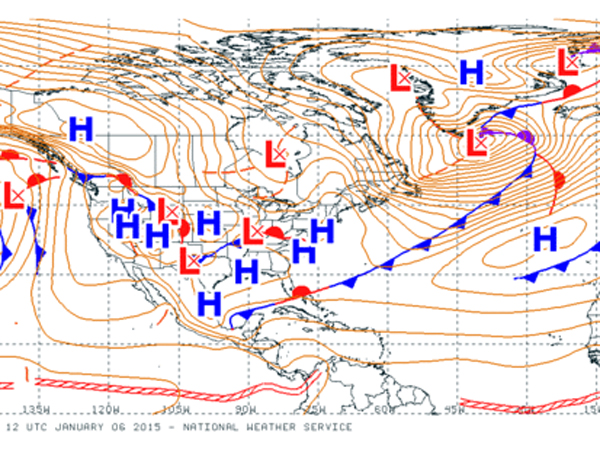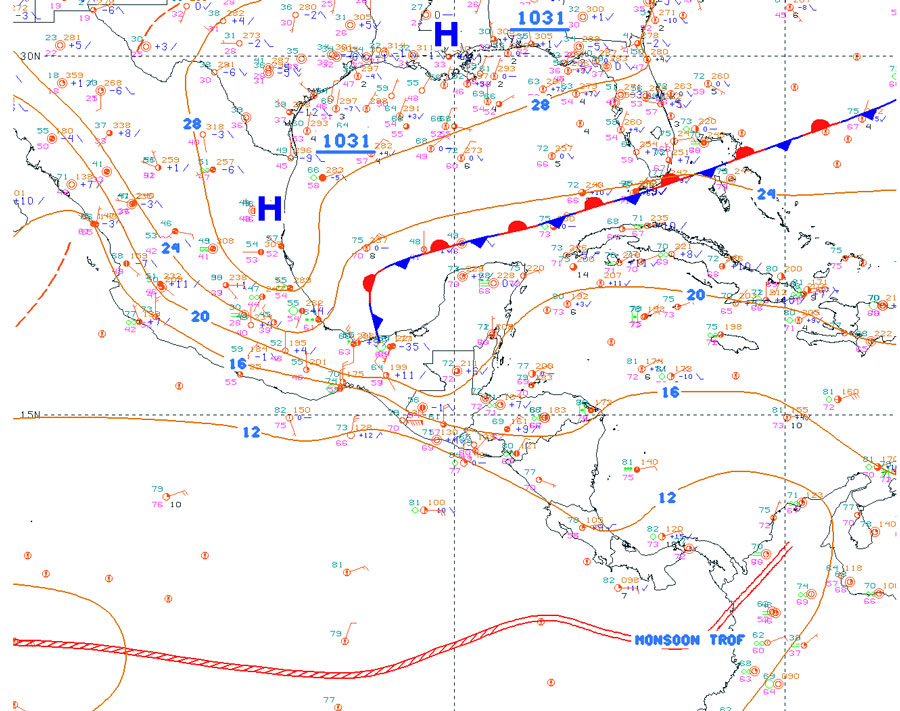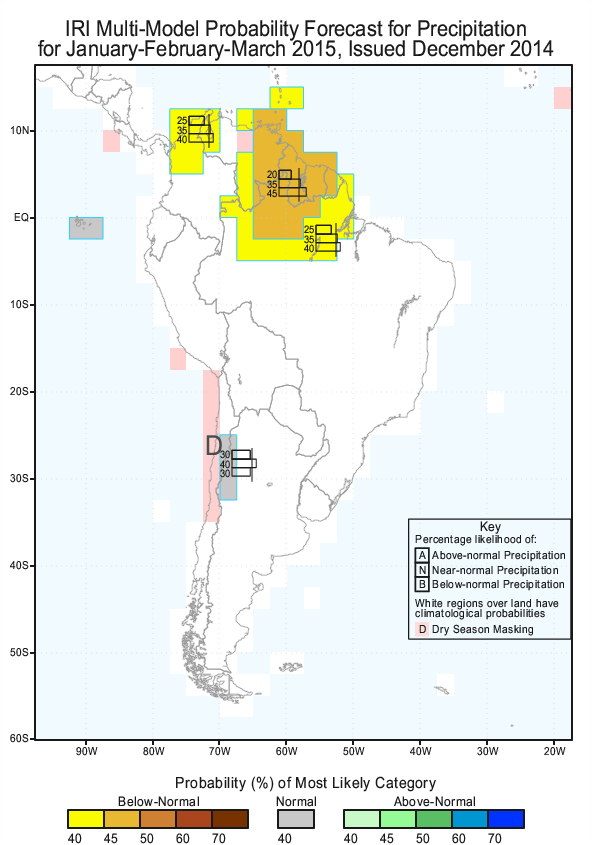Lloyd Cripe reports the weather for the year end 2014.

| January 6, 2015 |
No. 75
|
December 2014 and year end totals
2014 is over and the data is in regarding 2014 Boquete weather.
Here are the totals for December 2014 along with the totals for the entire year in the District of Boquete. You can see from the chart that the rainfall for December was generally low and the yearly totals are low for some areas. Here at the Palmira Station we had less than an inch of rain in December.
|
Rainfall for December & Year 2014
|
|||
|
Area
|
Contributors
|
December
|
Year
|
|
El Santuario
|
Terry Zach
|
5.85
|
79.88
|
|
Jaramillo Abajo
|
Sela Burkholder
|
1.19
|
132.42
|
|
Jaramillo Arriba
|
Steve Sarner
|
5.51
|
134.31
|
|
Los Molinos
|
Fred Donelson
|
4.37
|
232.82*
|
|
Los Naranjos
|
Craig Bennett
|
3.13
|
73.70
|
|
Volcancito Arriba
|
Pat & Susan Farrell
|
1.02
|
n/a
|
|
Lucero (Cielo Paraiso)
|
Michael Mullin
|
4.88
|
160.29
|
|
Palmira Arriba
|
Lloyd Cripe
|
.93
|
89.03
|
|
n/a = not currently available; *=estimated due to equipment problems during the year
|
|||
You can take a look at the data for the Palmira Station since 2007 and clearly see that the total for the year 2014 was lower than normal. The Palmira Station had a total of 89.03 inches. This is the lowest we have recorded over the last 8 years.
Probably more interesting is the variability of the different areas for the year. Los Molinos seems to hold the record for most rain for the year although it is uncertain given some problems with the equipment. Next in line is Lucero with a total of 169.29 inches. Both are at lower elevations. The Jaramillo stations had totals of 132 to 134 inches. The measures from El Santuario and Los Naranjos had the lowest totals at 79.88 and 73.70 inches for the year.
If you look closely at the other data for the Palmira Station, you will see that the winds have increased in December 2014. They increased from an average of 3.4 mph in November to 11.9 mph in December.
Those who live here know that the winds have increased along with downed power lines and electrical outages. We are now several days into January of 2015 and at times having some strong winds. Yesterday the winds were very strong and gusty. I was driving back from David and a power line was across the north bound road near Las Brisas. I waited about an hour for police and power company to arrive and remove the line. At Palmira we have had a variety of power outages and my friends report the same in other Boquete areas. Our auxiliary generator has been busy and handy keeping us enlightened in the midst of darkness.
People frequently ask why the winds are kicking up so much this time of the year. Actually it is quite usual this time of year. The main reason for the winds is the changes in air pressure from the north frigid air masses as they interact with our very low pressures near the equator. This is what drives the North East Trade winds. North America is experiencing very cold temperatures and high pressures. The polar air masses are dipping south. The high pressure air wants to move to lower pressures like we have here so the winds howl toward us. You can read more about the weather up north and the cold air mass at Dr. Jeff Masters Blog.
As I write this, the current Unified Surface Analysis looks like this:

Note the cold front (blue line with blue teeth) that is over the Caribbean. Also not the big blue H’s. This is a large cold air mass with high pressures. Note that the ITCZ (candy striped line) is just south of us. This is a very low pressure area.
The more specific surface analysis for the Caribbean and us at this time can be seen here:

Note that the pressure near the big H is 1031 hPa. The pressure in our area at about the same time is 1007 hPa. That is a lot of difference in pressure. Ours is low so the high pressure moves in our direction and drives winds toward us. Therefore, we get lots of wind.
Also you have probably noticed that we are getting lots of moist air flowing over the mountains from Boca area and the Caribbean into Boquete. This misty wet spray is called Bajareque by the locals. It is not usually a full rain, but the mist can be quite heavy. The northern part of the District of Boquete gets lots of moisture at this time. You will note from the data chart for this month that both El Santuario and Los Naranjos got 3 to 5 inches of rain during December. They get a lot more Bajareque.
The Flower and Coffee Fair is starting later this week. Boquete often gets lots of Bajareque and wind during the fair. I have never really understood why this fair takes place at this time of the year since the chances are high that the weather will not be pleasant in downtown Boquete. I heard that the idea is to have the fair while the kids are still on their mid-term school break. This may be but it is a lousy time to do it weather wise. I think this should be rethought. Also the kids may get soaking wet and be blown away. Maybe this is why it is done!
Check out the latest ENSO Cycle Report to see that neutral conditions continue with the chances of El Niño at 58% during during the Northern Hemisphere winter and lasting into the spring of 2015.
The IRI (International Research Institute for Climate and Society (select South America from the Region menu) is reporting dryer conditions for our area for January,February and March of 2015. Note there is a 40+% probability prediction of lower precipitation for parts of Central America and northern South America (yellow areas).

Good luck in the northern sector of the District of Boquete with your umbrellas fighting the Bajareque and the wind. You will need both! If you want a break from all of this head to David. Hang in there. Eventually the winds will subside.
Lloyd Cripe